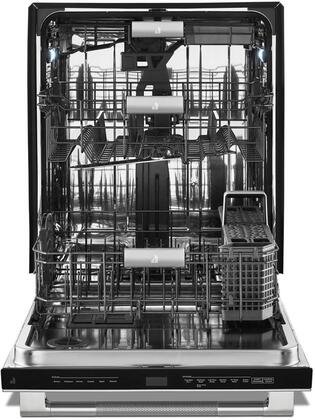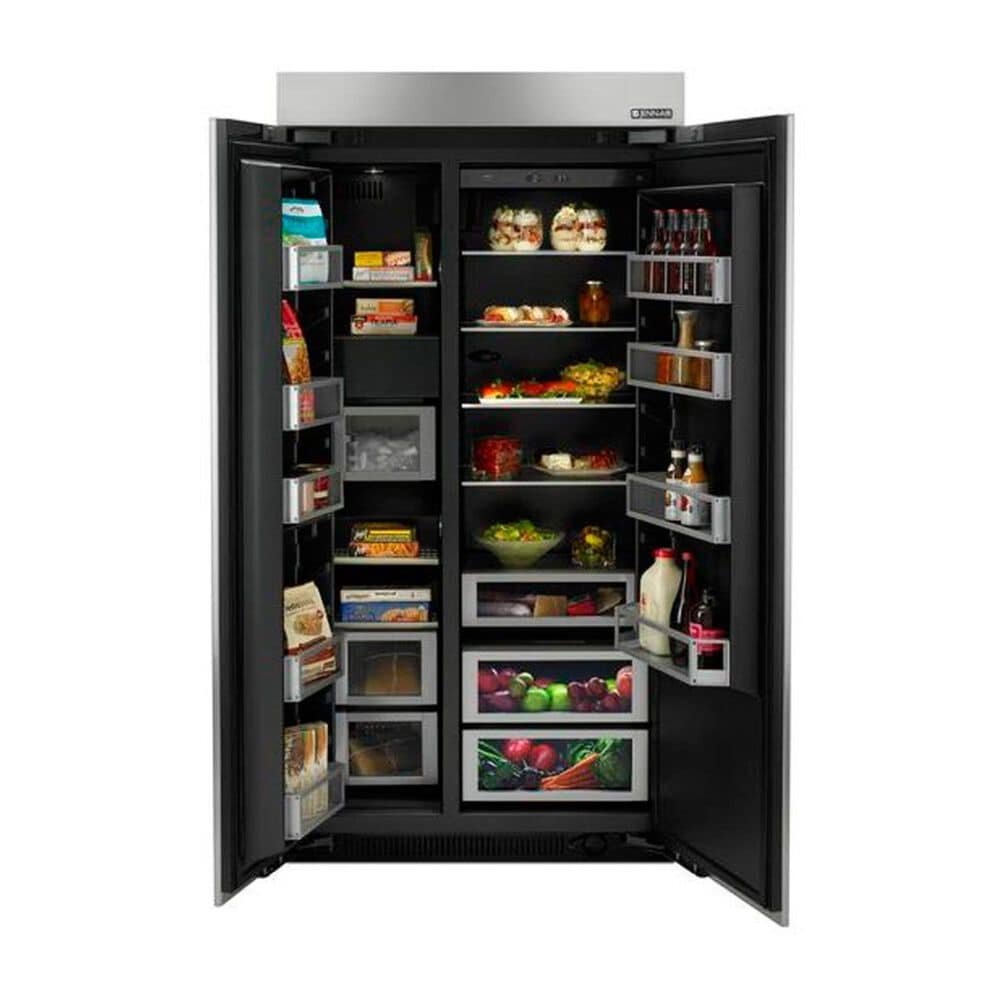Because experience means more
Welcome back, everyone! This week we're covering the other half of our Blogger vs Owner faceoff of 2022. This time we'll be looking at what an experienced professional has to say about the appliances on the market and why she chooses what she does. If you're looking for new appliances or just want to check out what the differences might be, this is the post for you.
Dishwasher - Jenn-Air JDPSS246LL
Price: $2199.00
Starting off with the dishwasher, I liked the RISE series the best, not only because of everything it can handle but because it's energy certified, it's quiet and it has a stainless steel tub.
High-Capacity 3rd Rack with Wash
The largest 3rd Level Rack in the luxury industry glides with quiet and ease, even when fully loaded with tapas bowls, large rocks glasses and cocktail shakers.
RISE Series 24 Inch Built-In Dishwasher with 6 Wash Cycles, 15 Place Settings, Energy Star Certified, 38 dBA Quiet System, Enhanced Cinematic Interior Lighting, Stainless Steel Tub, TriFecta Wash System, Condensation Dry in Stainless Steel
Enhanced Cinematic Lighting
Shine a spotlight on clean. Packed with 18 LED lights that ramp up to full intensity, JennAir brand’s best lighting coverage chases away shadows to illuminate daring Obsidian racks.
Daring Obsidian Racks
A JennAir® signature, these dramatic black racks are inspired by the beauty of volcanic glass—showcasing clean dishes in striking contrast.
3-Stage Filtration
A coarse filter, large filter screen and fine filter cup keep oversized and fine food particles out of the pump and helps prevent them from being recirculated onto dishware.
Cooktop Jenn-Air 48" Rise Professional Gas Rangetop in Stainless Steel
Price: $ 5299.00
“For the cooktop, I'm like many Texans and cooks, I prefer having a gas range. Fortunately, Jenn Air carries them and the professional variant at 48" is my pick. “
14 Rangetop Configurations
Bend fire to your will. Grills, griddles, brass burners. Three Widths. With 14 unique configurations, it's up to you. Cast off porous, superficially plated options. Go deeper. Infused with chrome, our griddle cleans up well after heavy usage. Underneath, a serpentine element powers out best griddle preheat. Fire up the grill for indoor entertainment on your terms.
Wall Oven Jenn-Air Rise 30" Combination Smart Electric Microwave and Wall Oven in Stainless Steel
Price $6549.00
Although I absolutely love the wolf oven our Blogger picked, it is gorgeous(!) I'm sticking with Jenn Air and that's the oven microwave combo. I prefer it when things have multiple functions when at all possible. This one really appeals to me not just because of how it looks, but also everything it can handle.
An upper convection microwave helps you create chef-inspired meals quickly. Below, the lower cavity's vertical dual-fan V2 convection system precisely directs heat to caress each ingredient - transforming prepped food into date-night-worthy dishes. With curated recipes and full-color doneness images on the Culinary Center, an intelligent culinary experience awaits.
7-inch full color LCD display
Alexa enabled device
Google assistant enabled device
SOFTEN/MELT CYCLE Ribbons of molten chocolate. Butter that yields to your knife. Melt and soften with delicate heat that ignites passionate appetites.
AUTO CONVECTION CONVERSION Bake with abandon. The oven automatically converts temperature and cook time to make any recipe a convection recipe.
Refrigerator Jenn-Air 42" Built-In Side-by-Side Refrigerator
Price : $9,699.00
.... you guessed correctly - Jenn Air - I am actually putting this in my house beginning of next year, although I've already put in an order to try and guarantee that it will be available then. Like we mentioned last year, it's better to schedule what you're wanting ahead of time, and increase your chances of getting what you want given the shortages.
The exclusive Obsidian interior brings a luxurious finish to the inside of this Jenn-Air® integrated built-in refrigerator. The refrigerator achieves a seamless look with a flush design that features concealed hinges and trim pieces. With optional custom panels, it blends completely into cabinetry, a luxury detail that designers appreciate.
Precision Temperature Management System
Advanced Climate Control Drawer
Produce Preserver
Multi-Point LED Theater Lighting
Capacitive Touch Controls with LED Display
Soft-Close Crisper Drawers
Washer & Dryer Combo Maytag 4.5 Cu. Ft. Front Load Washer and 7.3 Cu. Ft. Electric Dryer in White
Price: $1998.00
"The washer and dryer, this is the toughest choice for me. With the amount of use these appliances go through, that makes them extremely hard to spend the large amounts of money for them. I consider a washer or dryer to be "disposable" after 3-4 years and would be happy if they make it 5 years. (Sadly many on the market currently aren't built to last beyond that, even if I wish they were.)
I choose the ones with less features, a deep fill option and an agitator if at all possible, which means they're going to be top load washers. Sadly, the "pretty" laundry room you can find on Pinterest all focus on the front-loading ones, which doesn't work for me.
I recently replaced my 4-year-old GE set with a Maytag set mainly because it was in stock (even those of us in the business have to fight with getting things with the current supply chain issues.)
Washer features:
12 hr Fresh Spin Option
Quick Wash Cycles
Late Add Feature
Steam Option
2 Rinse Options
10 Wash Cycles
Automatic Temperature Controls
Dryer features:
Advanced Moisture Sensing
Quick Dry Cycle
Wrinkle Prevent Option
Reversible Door
Automatic Dry Control
Powder Coat Drum
4 Temperature Options
3 Dryness Levels
Stackable
When we sat down with Lisa and asked her what it was about these products that affected her choices, this was what she had to say. " Jenn Air is a high end made by Whirlpool, which makes them service friendly and easier to obtain replacement parts. If I'm going to purchase something for my home, which many of these are, I want to know that I'll have an easy time working on it. You can't say something will never break. Even the best on the market eventually have issues. So why make it that I'll have to wait even longer to get it fixed? I also love the black interior of the refrigerator, that appeals to me. The microwave/oven has the ability to black out the panel when not in use which is what absolutely sold me on it. And then the dishwasher and range top match the oven, and I admit, I do love having things match.
So, what did you think? Is this what you were expecting to hear from a professional? What did you agree or disagree with? Let us know over on our Facebook page or in the comments down below. We love hearing from y'all.
If you're here because you haven't given up on your current cooktop (we don't blame you, it's so pretty) we can help. Our owner isn't just experienced with finding the best appliances, she's also got over 30 years of experience in repairing them. Whether your cooktop won't ignite or your dryer is making insane creaking sounds (you know the ones), Appliance Rescue Service is here to help. You can reach out to us via our contact page or by calling us ( (214) 599-0055 ) to set up an appointment. We'll work with you based on your schedule to find a time that works to have our experts come to you and not only diagnose the problem but fix it. At Appliance Rescue Service, getting your home running smoothly again is our top priority.
*Note : anything said on this blog is a matter of opinion and shouldn't be taken as a slight against any of the companies stated.
** All prices are current as of posting but are subject to change, especially since we don't control them. :)













